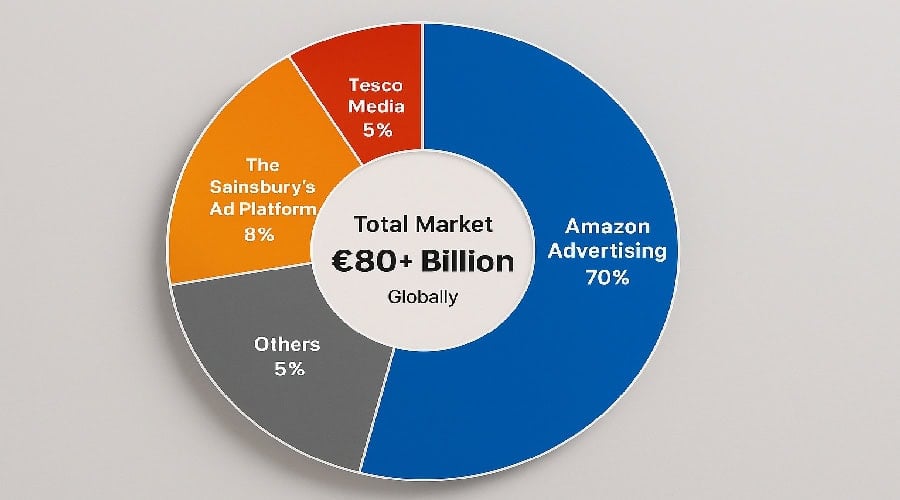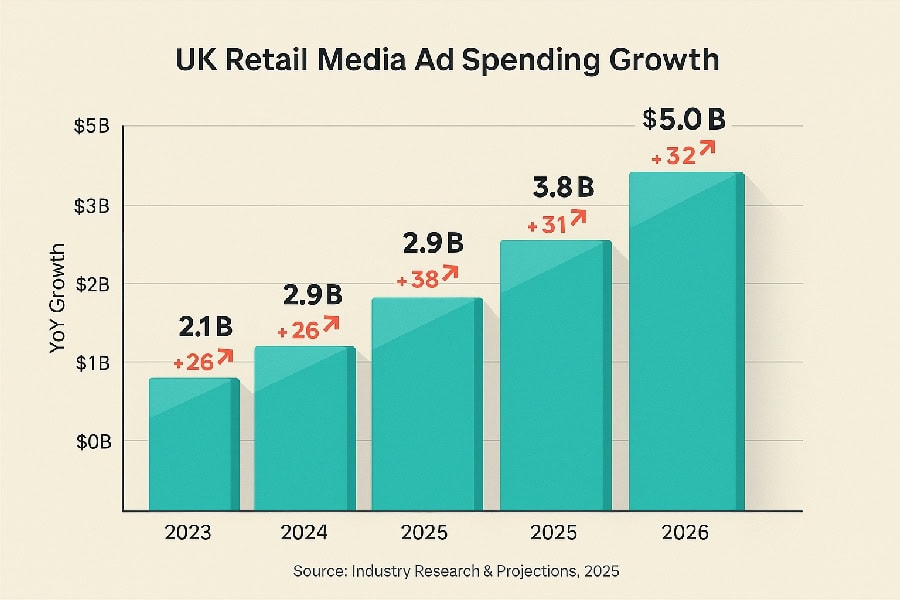Retail Media Networks: The New Frontier for Affiliate Marketers

Retail Media Networks (RMNs) are rapidly emerging as one of the most significant developments in digital advertising, creating new opportunities for affiliate marketers to reach consumers at crucial decision-making moments. As these platforms continue to expand, understanding how they function and how to leverage them effectively has become essential knowledge for performance marketers.
What Are Retail Media Networks?
Retail Media Networks are advertising platforms owned and operated by retailers that allow brands to place targeted advertisements across the retailer’s digital properties—including websites, mobile apps, and in some cases, in-store displays. These networks utilise the retailer’s first-party customer data to deliver highly targeted advertising to shoppers at or near the point of purchase.
“RMNs represent the convergence of advertising and e-commerce in its most direct form,” explains digital marketing analyst Rishi Lakhani. “They’re unique because they can connect advertising directly to purchase in a closed-loop environment, offering unprecedented attribution capabilities.“
The Rise of Retail Media

The growth of retail media has been explosive. According to recent industry research, retail media ad spending in the UK is projected to reach £3.8 billion in 2025, representing a 32% year-over-year increase. Globally, the market is expected to exceed £80 billion this year.
This growth has been fuelled by several factors:
- The deprecation of third-party cookies has increased the value of retailers’ first-party data
- E-commerce acceleration during and after the pandemic established new digital shopping habits
- Retailers seeking new revenue streams beyond traditional product sales
- Brands looking for alternatives to increasingly crowded social and search advertising channels
Major Players in the Retail Media Space
While Amazon Advertising pioneered the retail media model and remains the dominant player with approximately 70% market share, the landscape has expanded significantly with several major retailers launching their own networks:
- Amazon Advertising – The largest RMN offering sponsored products, sponsored brands, and display ads
- Walmart Connect – Combining online and in-store advertising opportunities
- Roundel by Target – Offering off-site targeting capabilities beyond Target’s own properties
- Kroger Precision Marketing – Leveraging loyalty card data for highly targeted campaigns
- Tesco Media and Insight Platform – The UK’s largest grocer’s entry into the retail media space
- Sainsbury’s Ad Platform – Offering advertising across Sainsbury’s, Argos and Nectar platforms
- eBay Ads – Providing access to shoppers with high purchase intent
- PromoteIQ – Microsoft’s retail media technology platform powering multiple retailers’ networks
Why Retail Media Networks Matter for Affiliate Marketers
For affiliate marketers accustomed to working with traditional affiliate networks and programmes, retail media represents both a challenge and an opportunity. Unlike traditional affiliate marketing that typically operates on a cost-per-acquisition (CPA) model, many retail media platforms currently use cost-per-click (CPC) or cost-per-mille (CPM) pricing models.
However, the lines between affiliate marketing and retail media are increasingly blurring:
“More retail media networks are introducing affiliate-like commission structures for certain ad products,” notes James Richardson, e-commerce partnerships director at Affiliate Nexus. “We’re seeing the emergence of hybrid models that combine the targeting capabilities of retail media with the performance-based economics that affiliate marketers prefer.“
The primary advantages for affiliate marketers exploring retail media include:
1. Unparalleled Purchase Intent
Retail media reaches consumers when they are actively shopping and in a buying mindset, creating higher conversion potential compared to other channels.
“The difference in purchase intent is dramatic,” says Richardson. “When someone is already on a retailer’s site searching for products, they’re much further down the funnel than someone scrolling through social media.“
2. Closed-Loop Attribution
RMNs can track the entire customer journey from ad impression to purchase within their ecosystem, providing clear attribution that has long been challenging in traditional affiliate marketing.
3. First-Party Data Advantage
With increasing privacy regulations and the phasing out of third-party cookies, retail media’s reliance on first-party data provides a future-proof targeting mechanism.
4. Category Exclusivity Opportunities
Some retail media platforms allow brands to secure category exclusivity, blocking competitors from advertising in the same product categories during specified timeframes.
Strategic Approaches for Affiliate Marketers
For affiliate marketers looking to incorporate retail media into their strategy, industry experts recommend several approaches:
Test and Learn
“Start with a modest budget allocated to retail media experiments,” advises Lakhani. “Focus on products with strong margins that can absorb the potentially higher customer acquisition costs while you optimise your approach.“
Leverage Existing Content
Affiliate marketers can repurpose existing product comparison content, buying guides, and reviews to create effective retail media creative that aligns with shopper intent.
Combine Channels Strategically
The most sophisticated affiliate marketers are creating multi-channel strategies that use traditional affiliate content to drive awareness and consideration, then retail media to capture purchase intent when shoppers move to retailer sites.
Negotiate Hybrid Models
As retail media networks compete for advertising budgets, some are becoming more flexible with their pricing models. Affiliate marketers should explore opportunities for hybrid arrangements that include performance-based components.
The Future of Retail Media and Affiliate Marketing
Industry analysts predict continued evolution in the retail media space, with several trends likely to impact affiliate marketers:
- Expansion beyond traditional retail sites to include connected TV, digital out-of-home, and other channels
- Greater standardisation across different retail media networks
- More sophisticated measurement capabilities allowing for better cross-channel attribution
- Increased adoption of performance-based pricing models that align with affiliate marketing approaches
“We’re seeing the beginning of a significant convergence between retail media and affiliate marketing,” says Lee-Ann Johnston. “The distinction between these channels will likely become increasingly blurred over the next few years, creating new opportunities for marketers who understand both ecosystems.“
For affiliate marketers, this convergence represents a prime opportunity to expand their capabilities and offer more comprehensive solutions to advertisers seeking to maximise their digital presence at every stage of the consumer journey.
Key Takeaways for Affiliate Marketers
- Diversify your channel mix to include retail media opportunities
- Develop expertise in retail media platforms relevant to your vertical
- Adapt your content strategy to support both traditional affiliate and retail media placements
- Focus on measurement to understand the true value of different marketing touchpoints
- Stay informed about evolving retail media offerings and pricing models
As retail media continues to grow and evolve, forward-thinking affiliate marketers who embrace these platforms as complementary channels rather than competitors will be best positioned to thrive in the changing digital marketing landscape.






